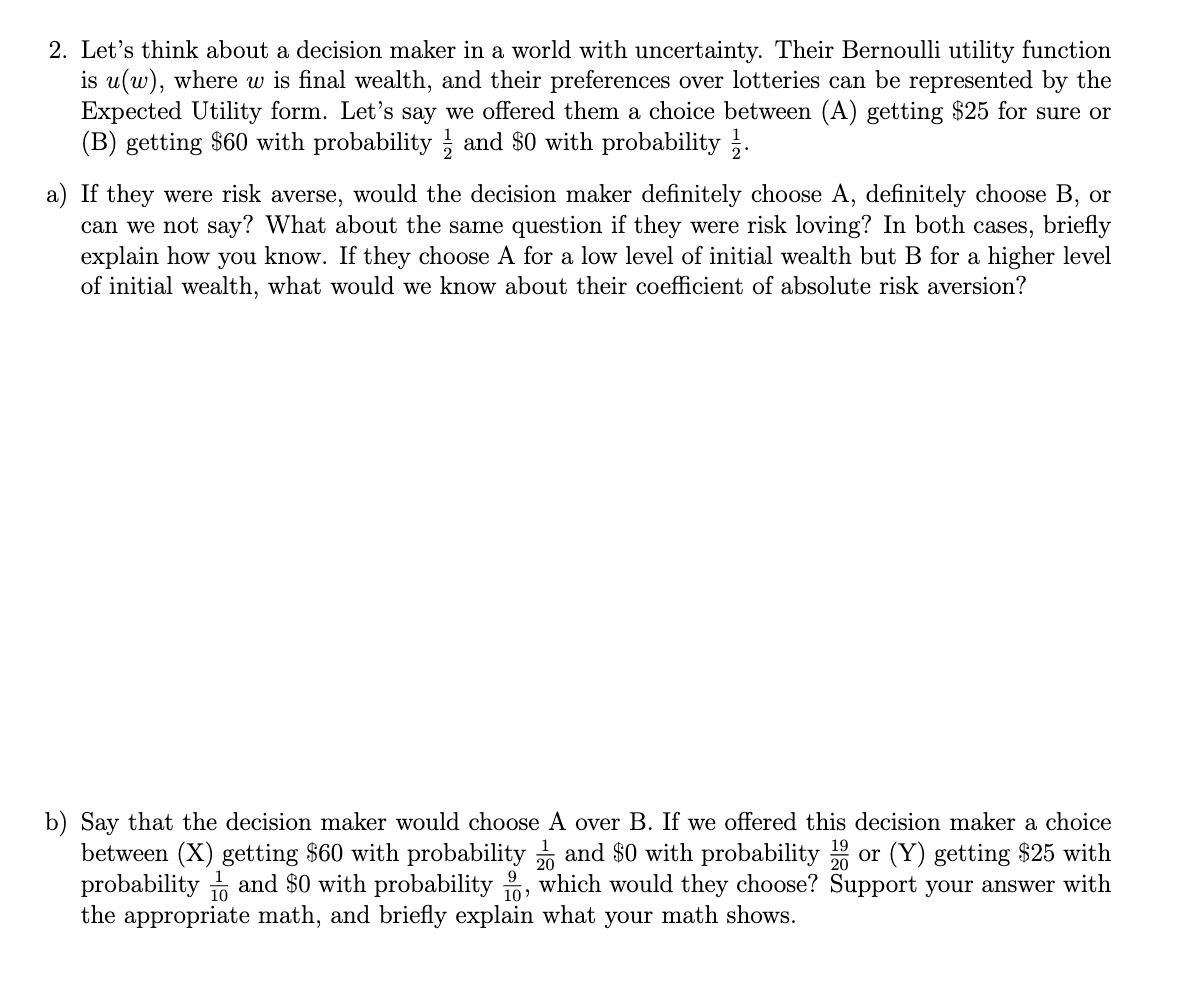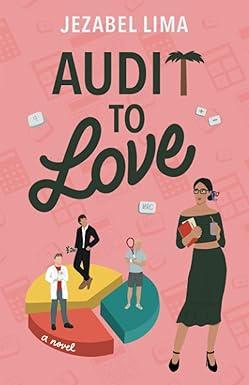
2. Let's think about a decision maker in a world with uncertainty. Their Bernoulli utility function is u(w), where w is final wealth, and their preferences over lotteries can be represented by the Expected Utility form. Let's say we offered them a choice between (A) getting $25 for sure or (B) getting $60 with probability 21 and $0 with probability 21. a) If they were risk averse, would the decision maker definitely choose A, definitely choose B, or can we not say? What about the same question if they were risk loving? In both cases, briefly explain how you know. If they choose A for a low level of initial wealth but B for a higher level of initial wealth, what would we know about their coefficient of absolute risk aversion? b) Say that the decision maker would choose A over B. If we offered this decision maker a choice between (X) getting $60 with probability 201 and $0 with probability 2019 or (Y) getting $25 with probability 101 and $0 with probability 109, which would they choose? Support your answer with the appropriate math, and briefly explain what your math shows. 2. Let's think about a decision maker in a world with uncertainty. Their Bernoulli utility function is u(w), where w is final wealth, and their preferences over lotteries can be represented by the Expected Utility form. Let's say we offered them a choice between (A) getting $25 for sure or (B) getting $60 with probability 21 and $0 with probability 21. a) If they were risk averse, would the decision maker definitely choose A, definitely choose B, or can we not say? What about the same question if they were risk loving? In both cases, briefly explain how you know. If they choose A for a low level of initial wealth but B for a higher level of initial wealth, what would we know about their coefficient of absolute risk aversion? b) Say that the decision maker would choose A over B. If we offered this decision maker a choice between (X) getting $60 with probability 201 and $0 with probability 2019 or (Y) getting $25 with probability 101 and $0 with probability 109, which would they choose? Support your answer with the appropriate math, and briefly explain what your math shows







